Quick and Easy Way to Check for Understanding in D2L in Real Time
Tips and suggestions for a variety of uses for the D2L survey tool. Possible applications include formative assessment, inclusion and diversity, student engagement, and mental health checks.
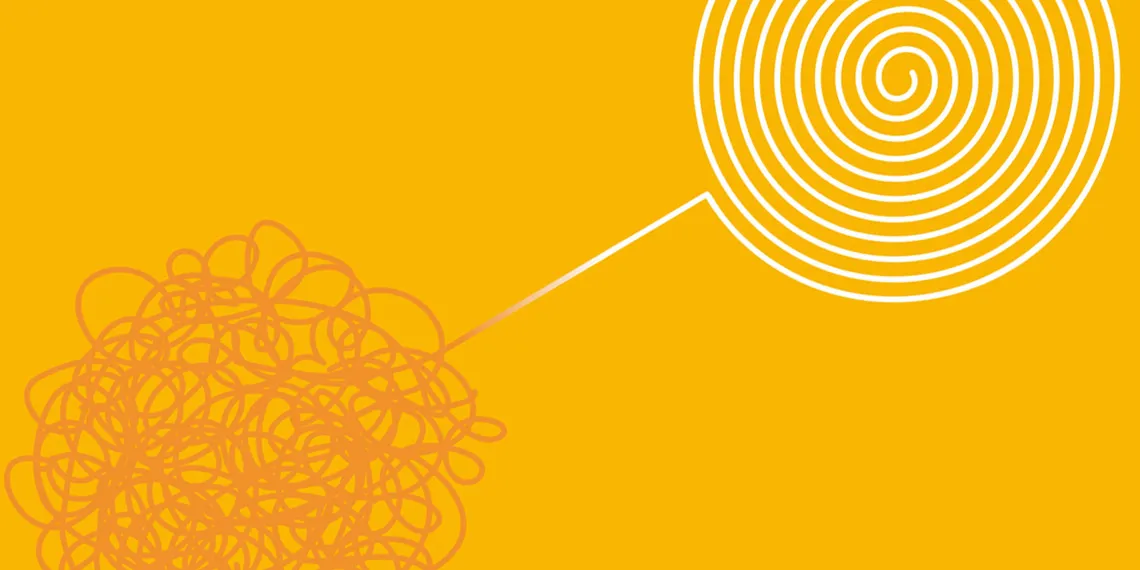
As an instructional designer collaborating with faculty to transition their face-to-face class to an online environment, one of the biggest frustrations I hear from faculty is, “How do I know if students are understanding?”College students are often reluctant to ask for help, even in face-to-face classes. This problem is exacerbated in online classes where the professors may be perceived as even less accessible. No matter how many cheerful weekly updates you send and how many times you invite students to come to you with questions, a significant number just will not do so. In the face-to-face classroom, the workaround is to watch student faces to check for understanding. How can we mimic that in an asynchronous virtual environment?
This semester, I started a new collaboration with Dr. Laura Van Dorn for a brand-new chemistry class. Dr. Van Dorn is an experienced teacher but is very unfamiliar with the online environment. As we discussed ideas for the class, she shared that when she transitioned to video teaching due to COVID-19 she used a simple thumbs up/thumbs down method for checking for understanding during her video classes. She wanted a way to replicate this in the asynchronous online class. She also wanted to incorporate her “class mascot” her cat Chirp, who is much adored by her students. With the help of Christina Kalel – D2L consultant extraordinaire, we created a simple (and cute) survey in D2L that can be easily incorporated into the class and has no points attached to it.
Surveys can be found in the Course Administration section, under Assessments. You can use text, images, or a combination as shown below. Using the Module learning objectives for the class, I created a simple but effective survey. Here is what it looks like for students:
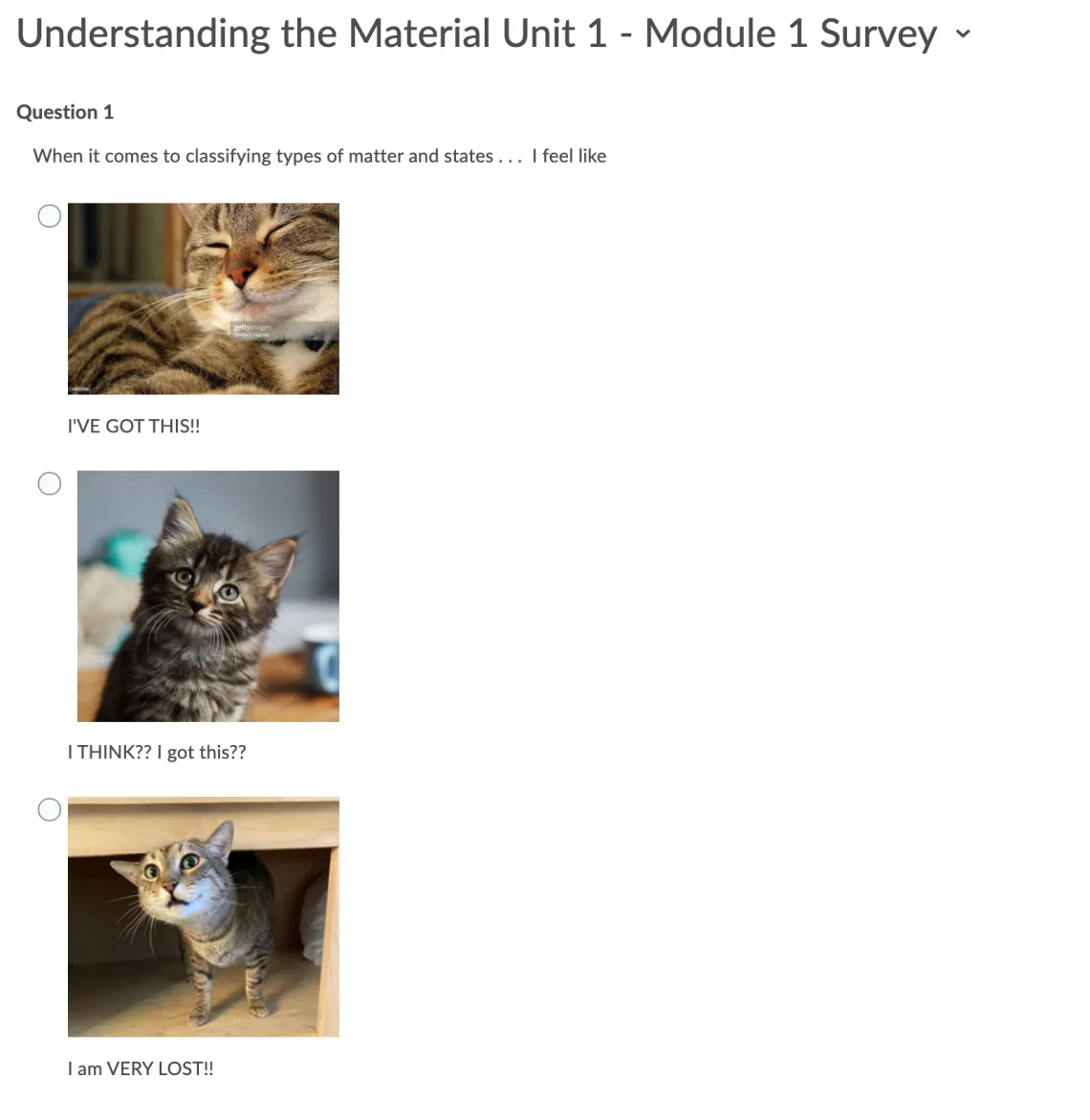
In this way, Dr. Van Dorn will have a weekly snapshot of what concepts students are grasping and where they will need more help. This allows her to address confusions before the summative assessments and create a more learner-centered environment. It was also a deliberate pedagogical choice to use grammatically incorrect words. “I got this & I don’t got this,” send a message of informality and lightheartedness which we are hoping will encourage the students to feel more comfortable sharing their level of understanding.
This survey idea is easily adapted to any class. For example, Dr. Price in his PSIO class wants to use discipline specific images – so a happy cell or a confused cell.
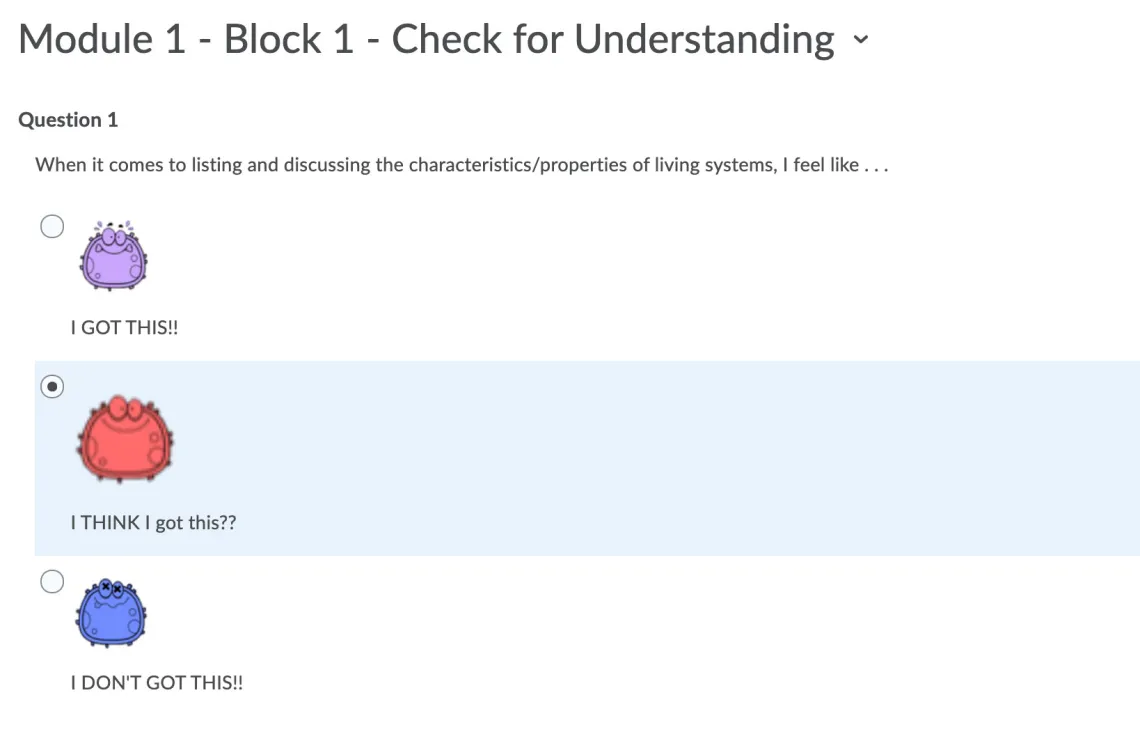
This approach can also be used in online training as a form of both self-assessment and to share with facilitators areas of confusion in training courses, such as this one for a D2L tutorial.
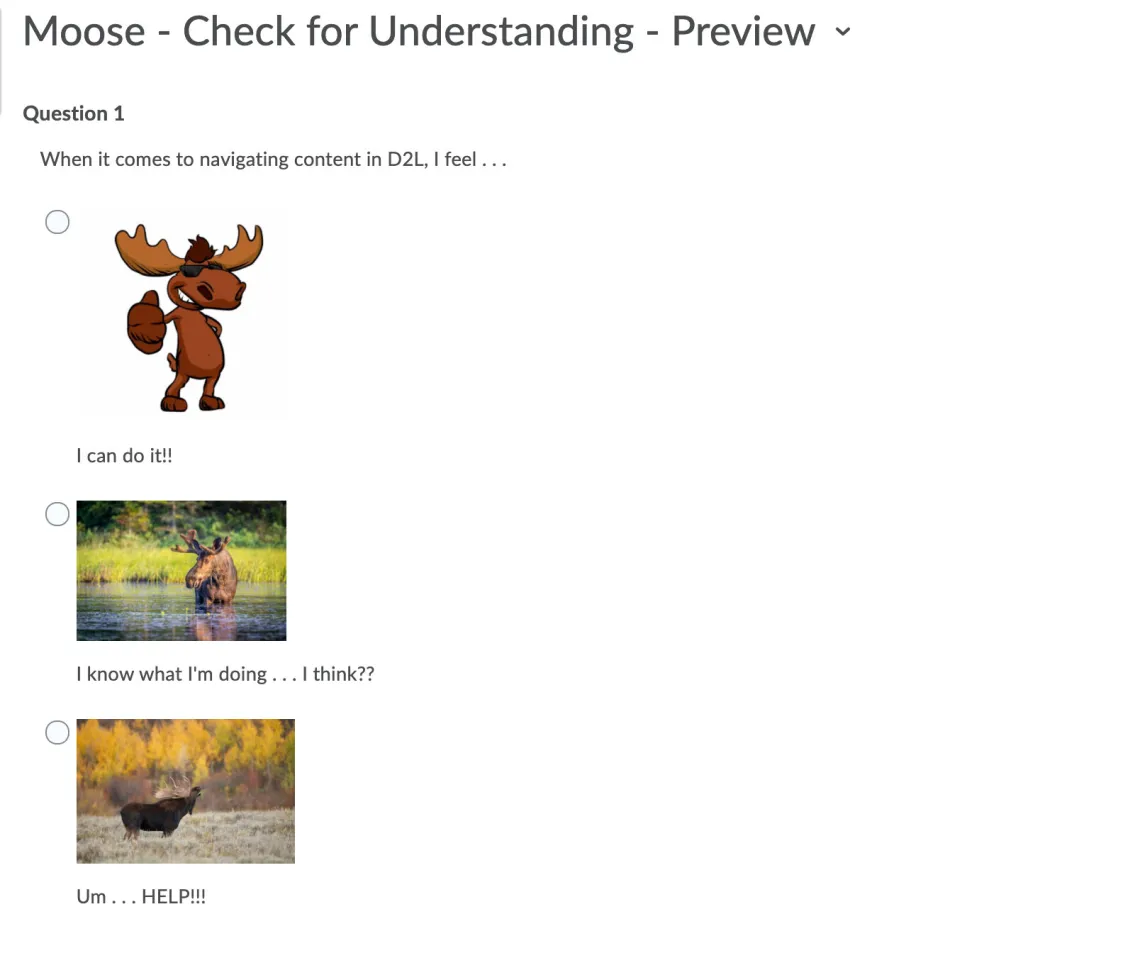
This is also an opportunity to build into your class inclusion and diversity by using images of a variety of ethnicities, religions, and gender expressions (see below).
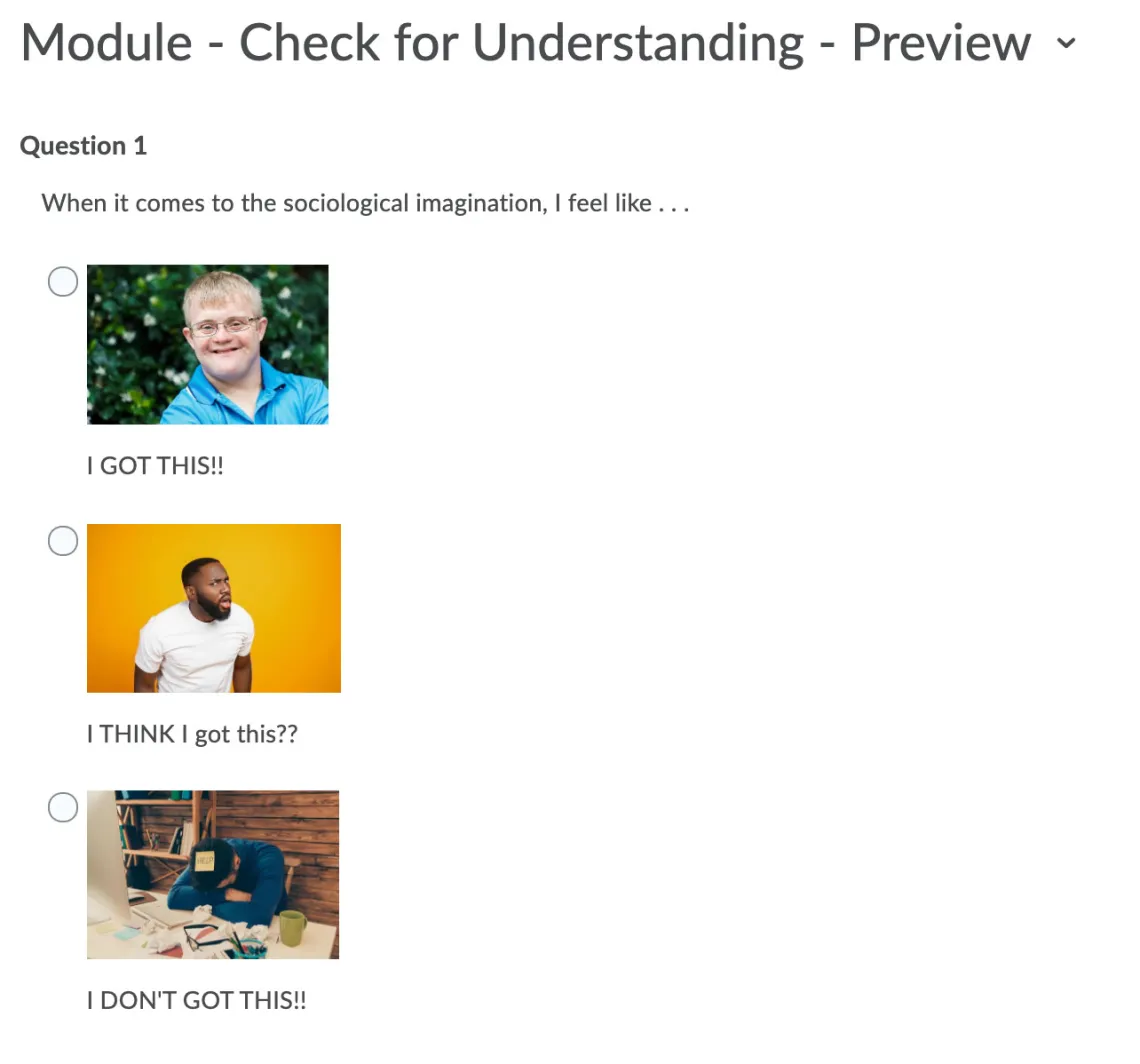
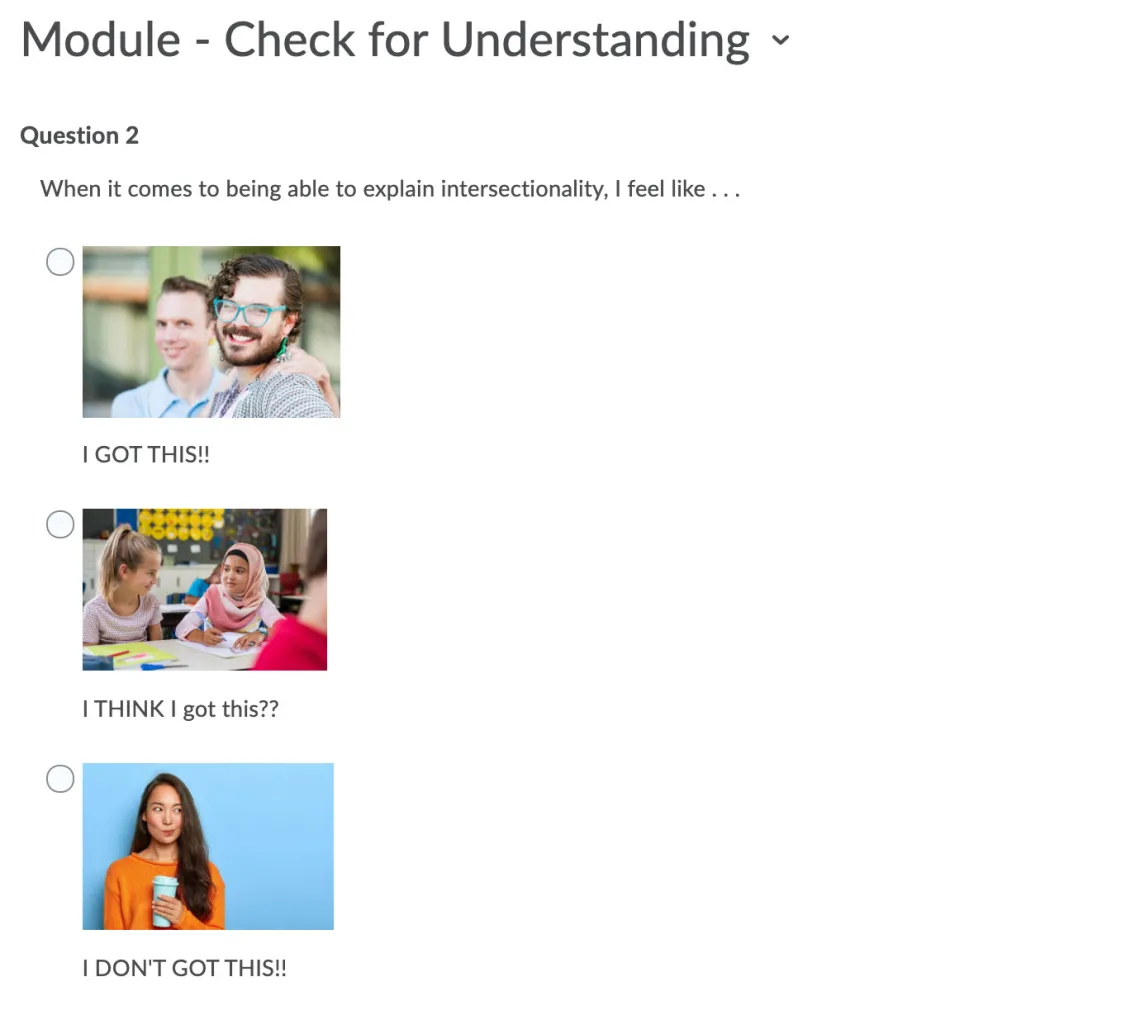
Finally, short surveys can be used for more than just figuring out muddy areas for students. A colleague of mine Dr. Ziska-Strange does something similar with emojis and/or gifs to do wellness checks for students.
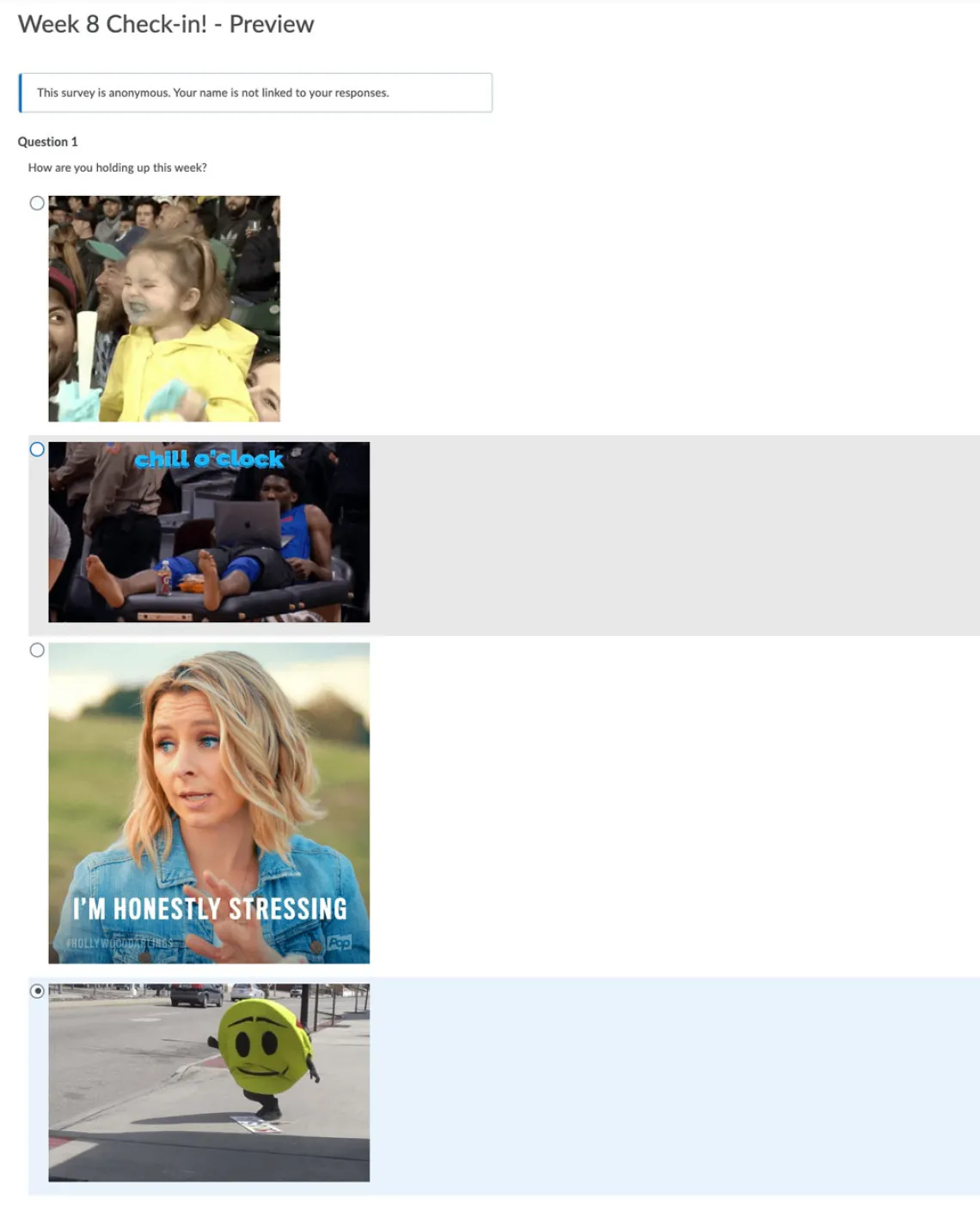
Surveys are an easy yet important and useful method of engaging with students, particularly during the pandemic. In short – surveys, the possibilities are endless!!


